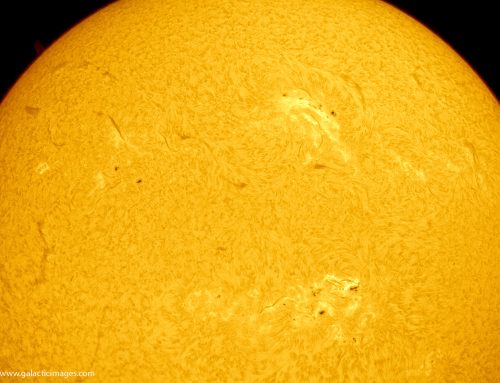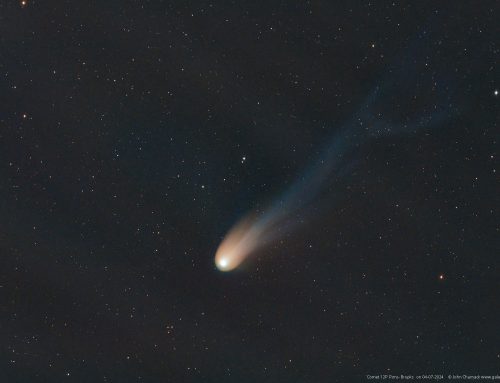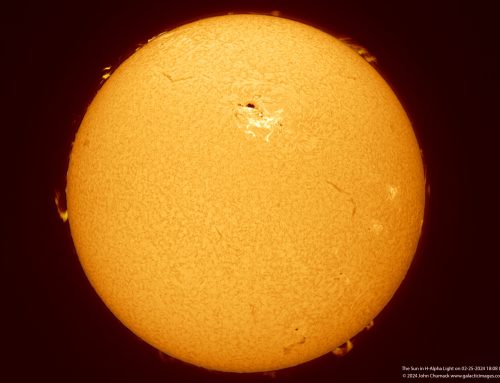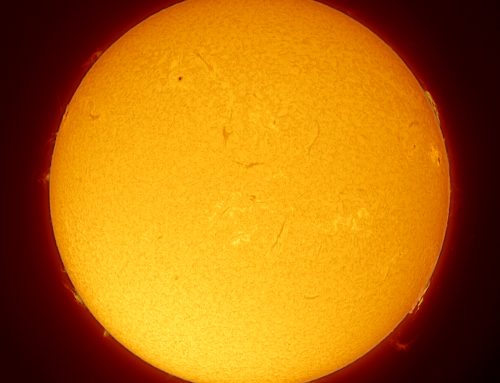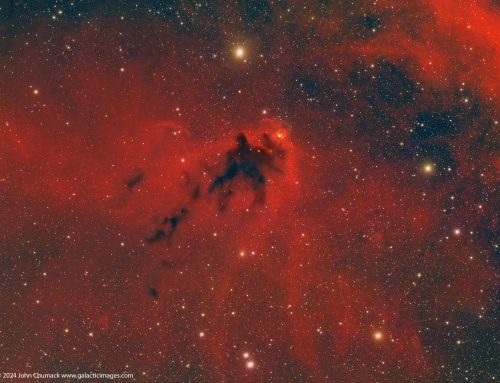M8 The Lagoon Emission Nebula Complex in Sagittarius, located just above the spout of the Teapot, it is easily visible as a bright glowing patch of light to the human eye from a dark location, looks great in binoculars too!
M8 is approximately 5000 light years away, and roughly 130 light years across in the longer dimension. Composed primarily of hydrogen, much of it ionized (heated or energized) by radiation from the nearby superstar Herschel 36, M8 is known as an emission nebula or star-forming region, often called a stellar nursery.
There is an open star cluster, NGC 6530, of young hot, blue stars probably only a few million years old. In addition to these young stars, there are also many dark nebulae visible or “Bok” globules of condensing gas and dust on their way to becoming “proto-stars” and eventually full-fledged stars like those already formed nearby.
In this image that I captured Saturday night 09-05-2015 you can see
M8 The Lagoon Emission Nebula Complex in Sagittarius with open star cluster NGC 6530 in front of the Nebula, also a globular Star cluster, bottom left corner is NGC 6544, and upper left of center is a small blue wisp of Nebulosity called IC 4678 reflection nebula. If you look near the brightest star on the Lagoon Nebula, you will see the tiny Hour Glass Nebula, so named for its distinctive shape. The Hourglass Nebula has its shape because of matter propelled by Star Herschel 36, look for the tiny star next to the tiny Hour Glass.
5.5 inch F5 Newtonian Reflector Scope & modified Canon Rebel Xsi DSLR, ISO 1600, 72 minute exposure at my Observatories at JBSPO in Yellow Springs, Ohio.
Best Regards,
John Chumack
www.galacticimages.com



